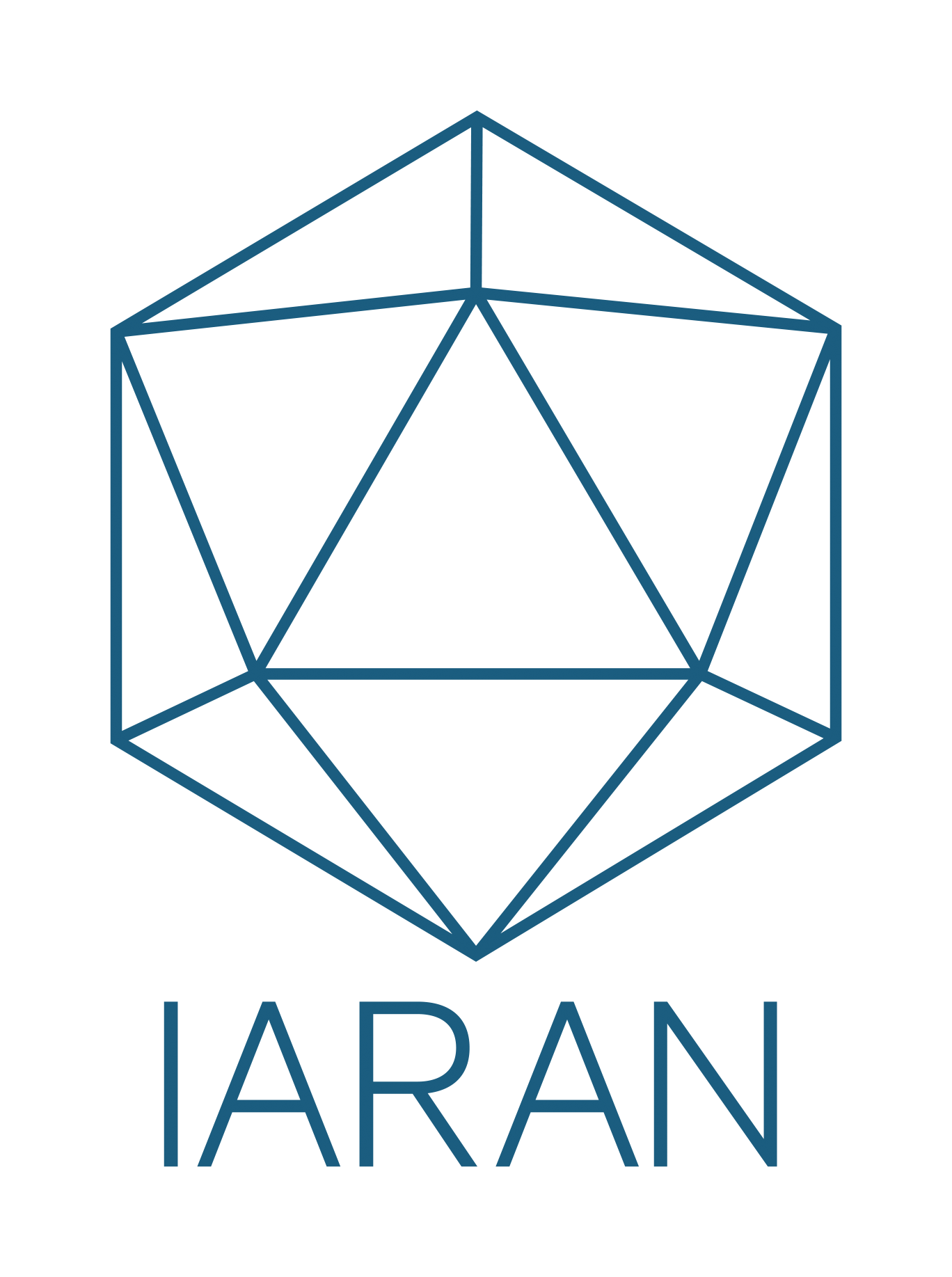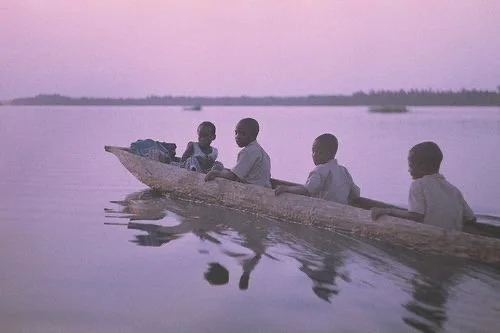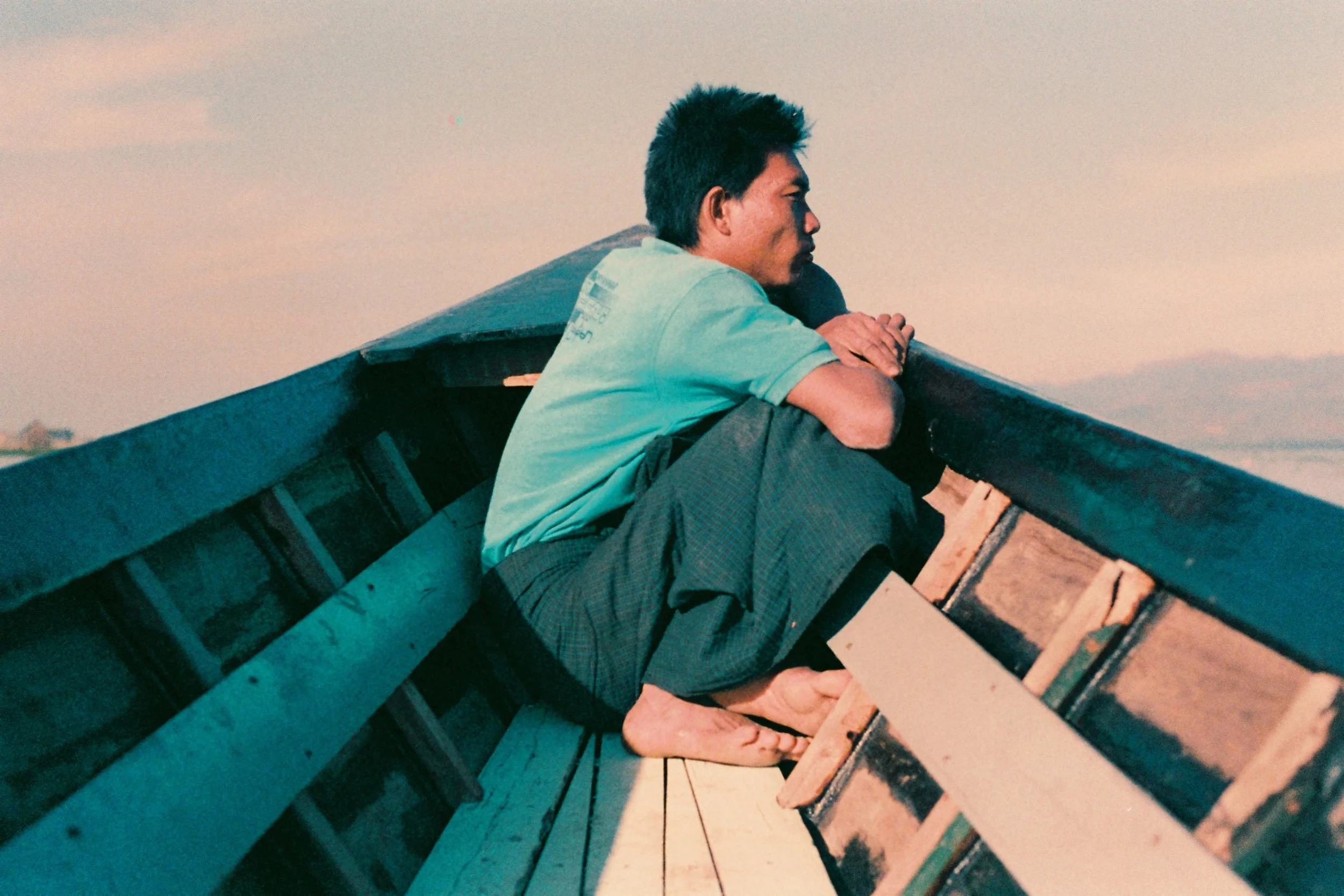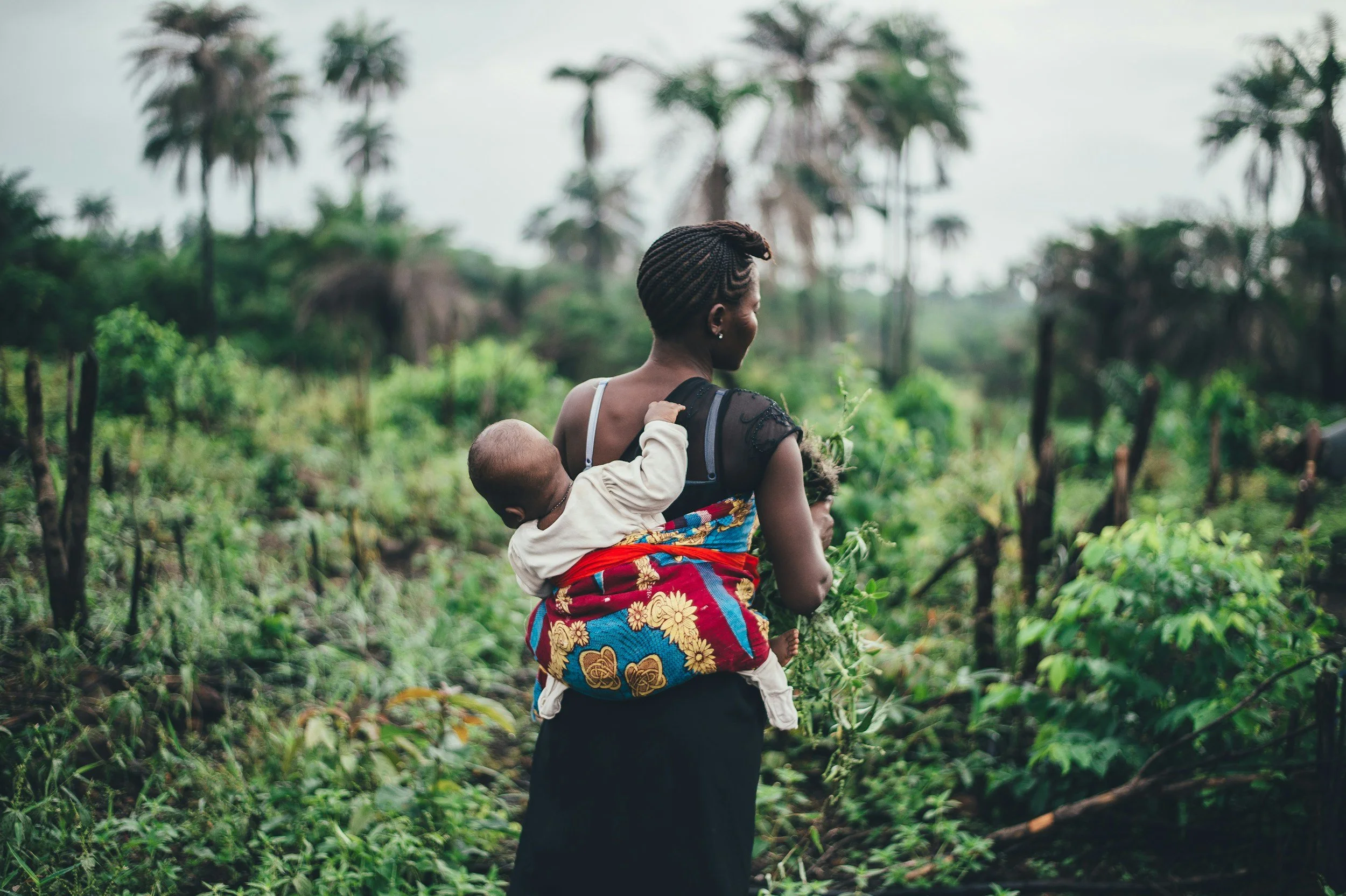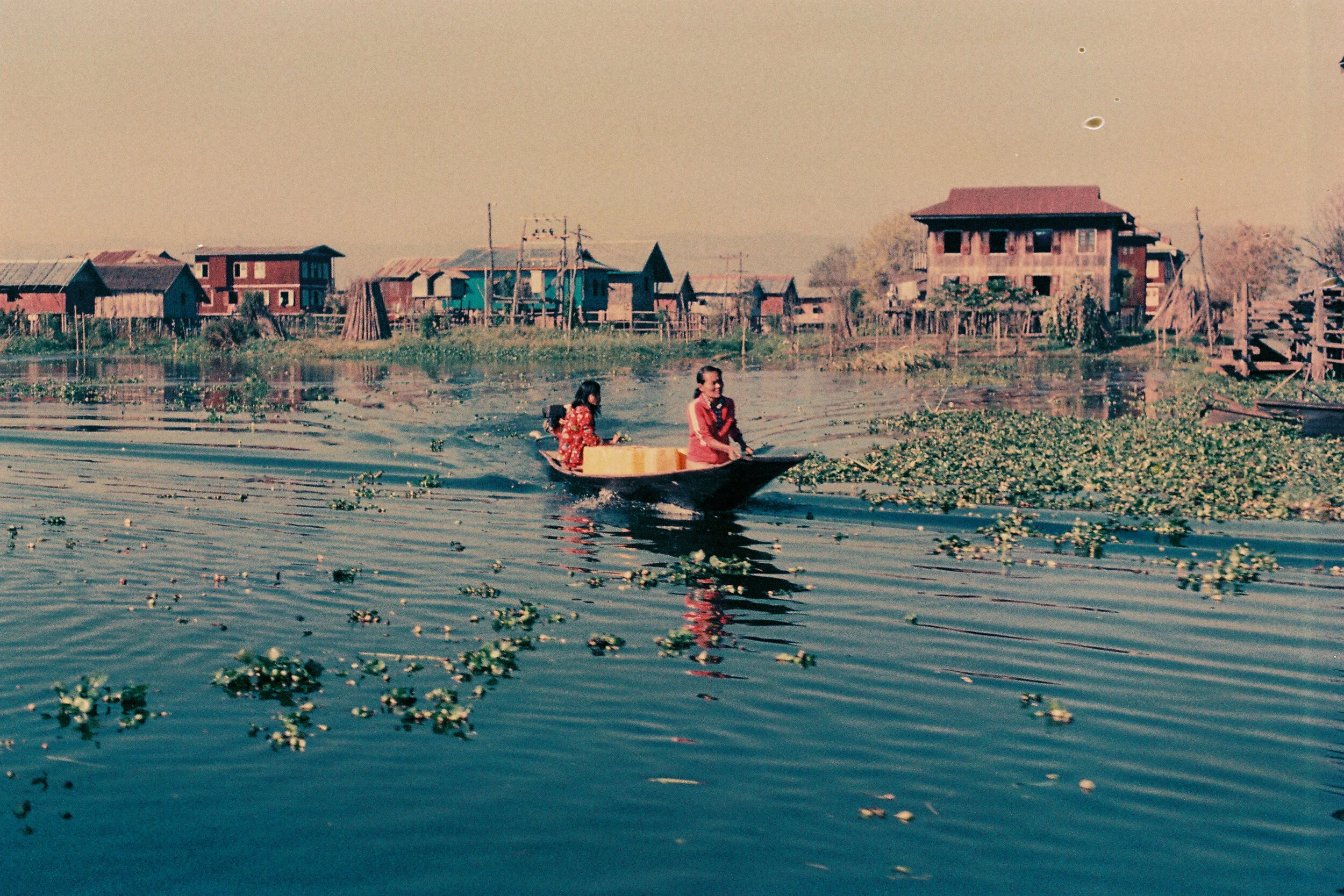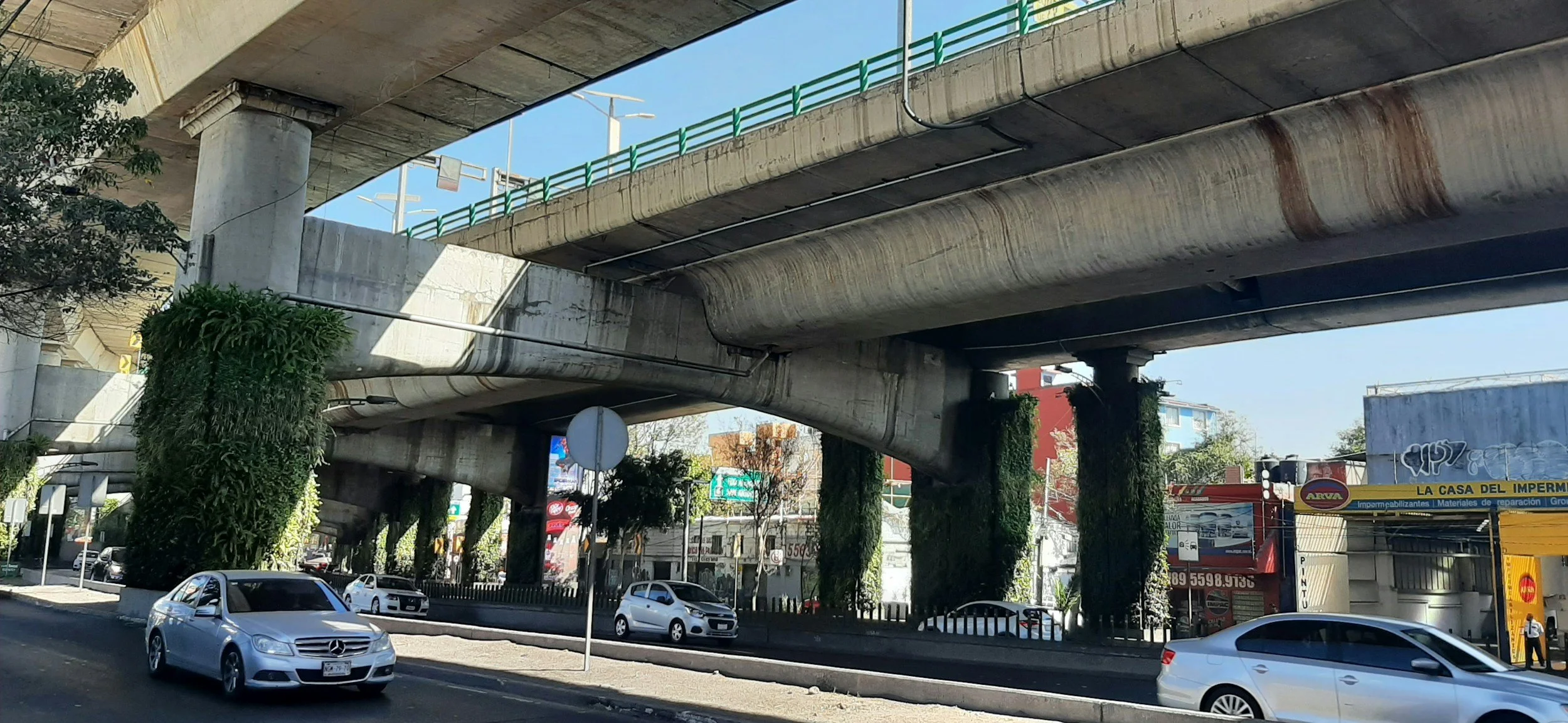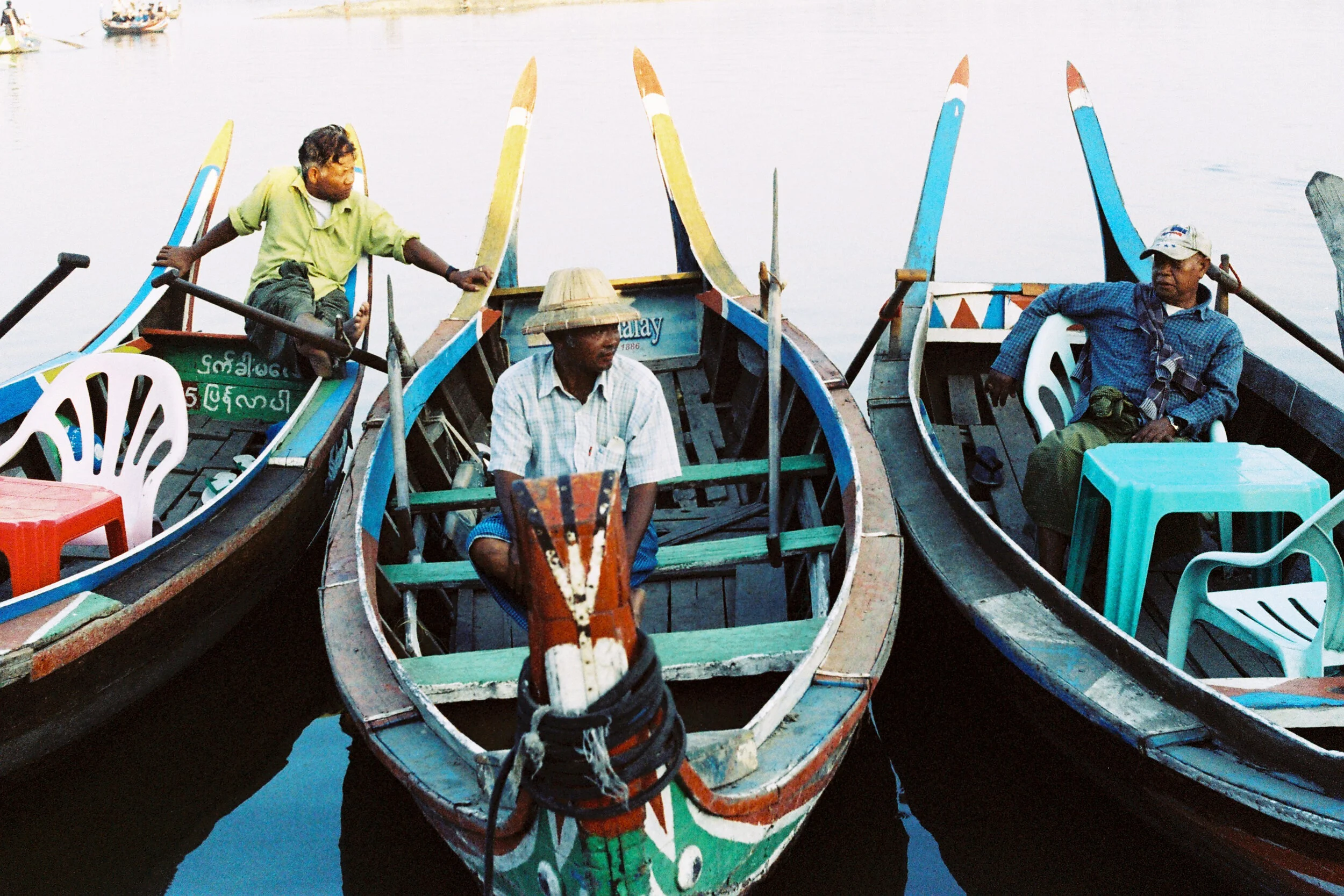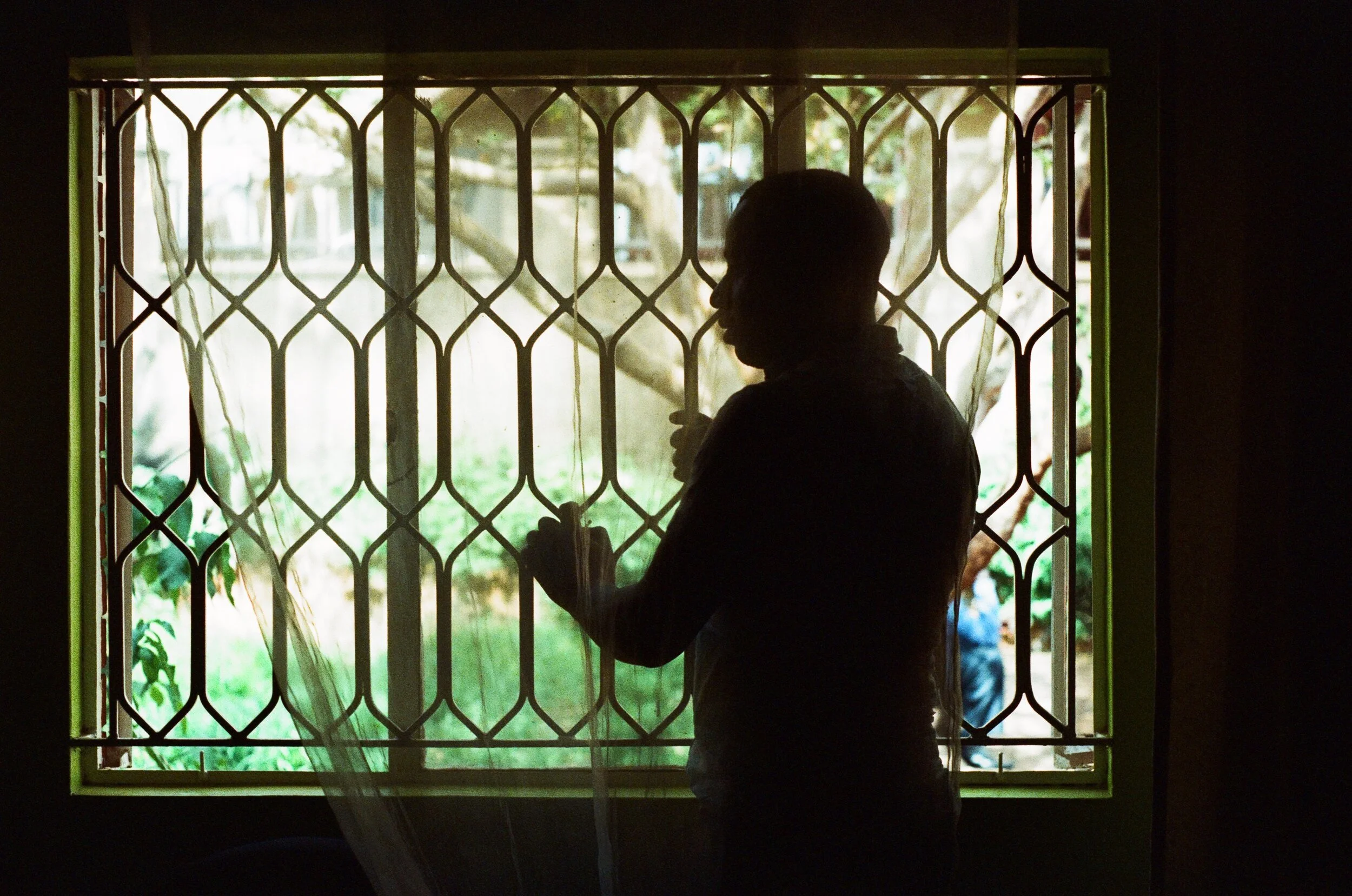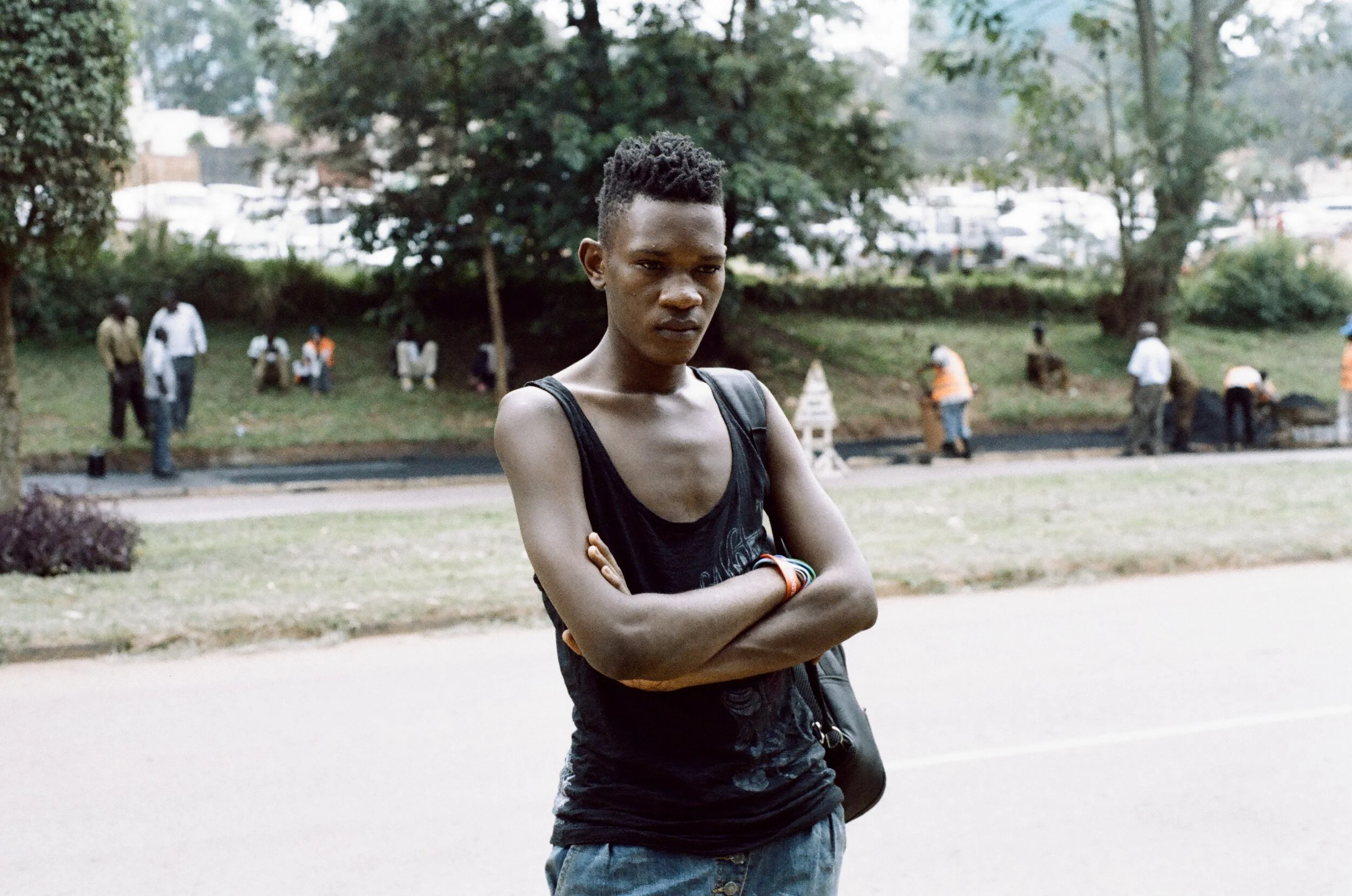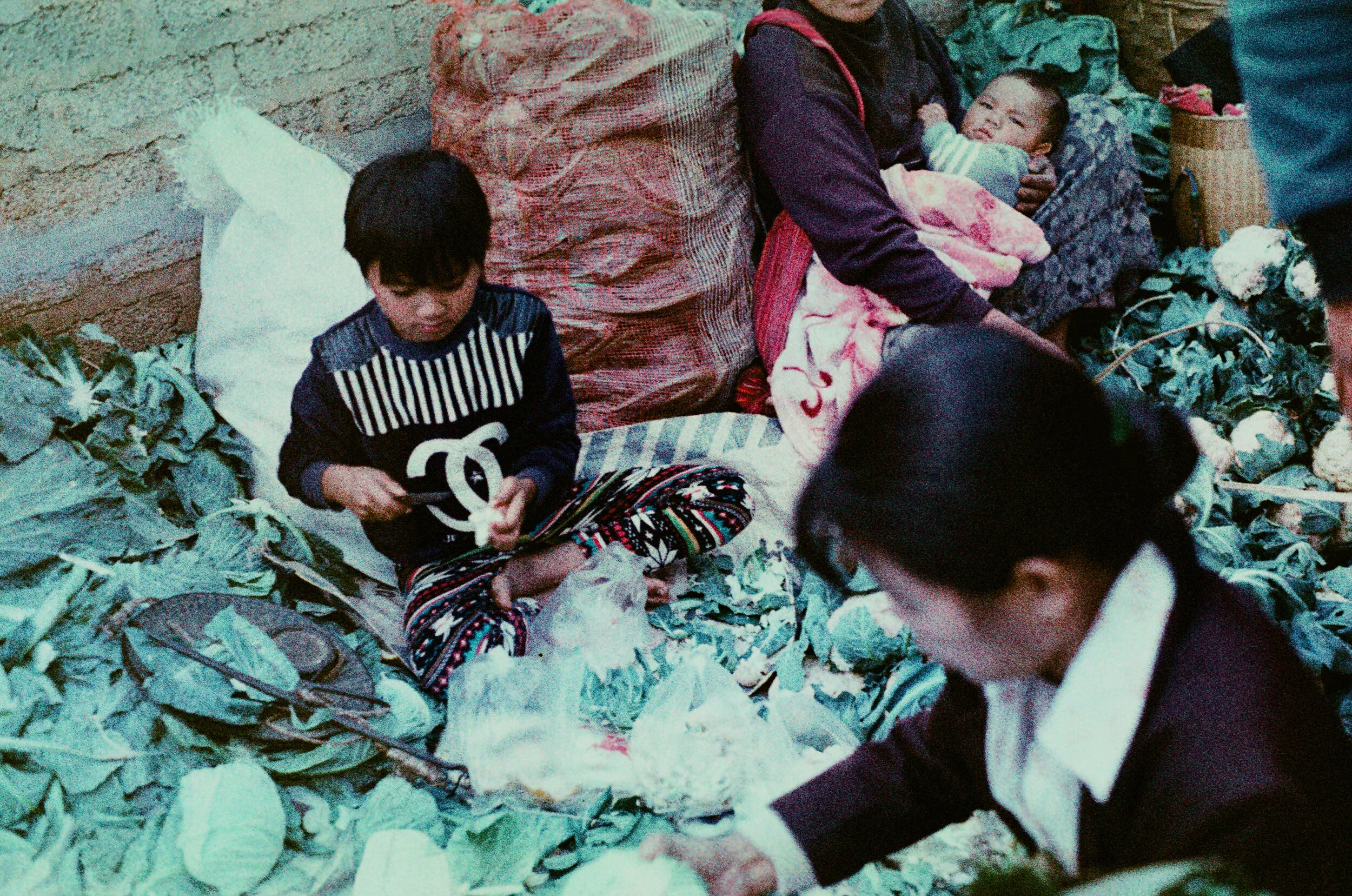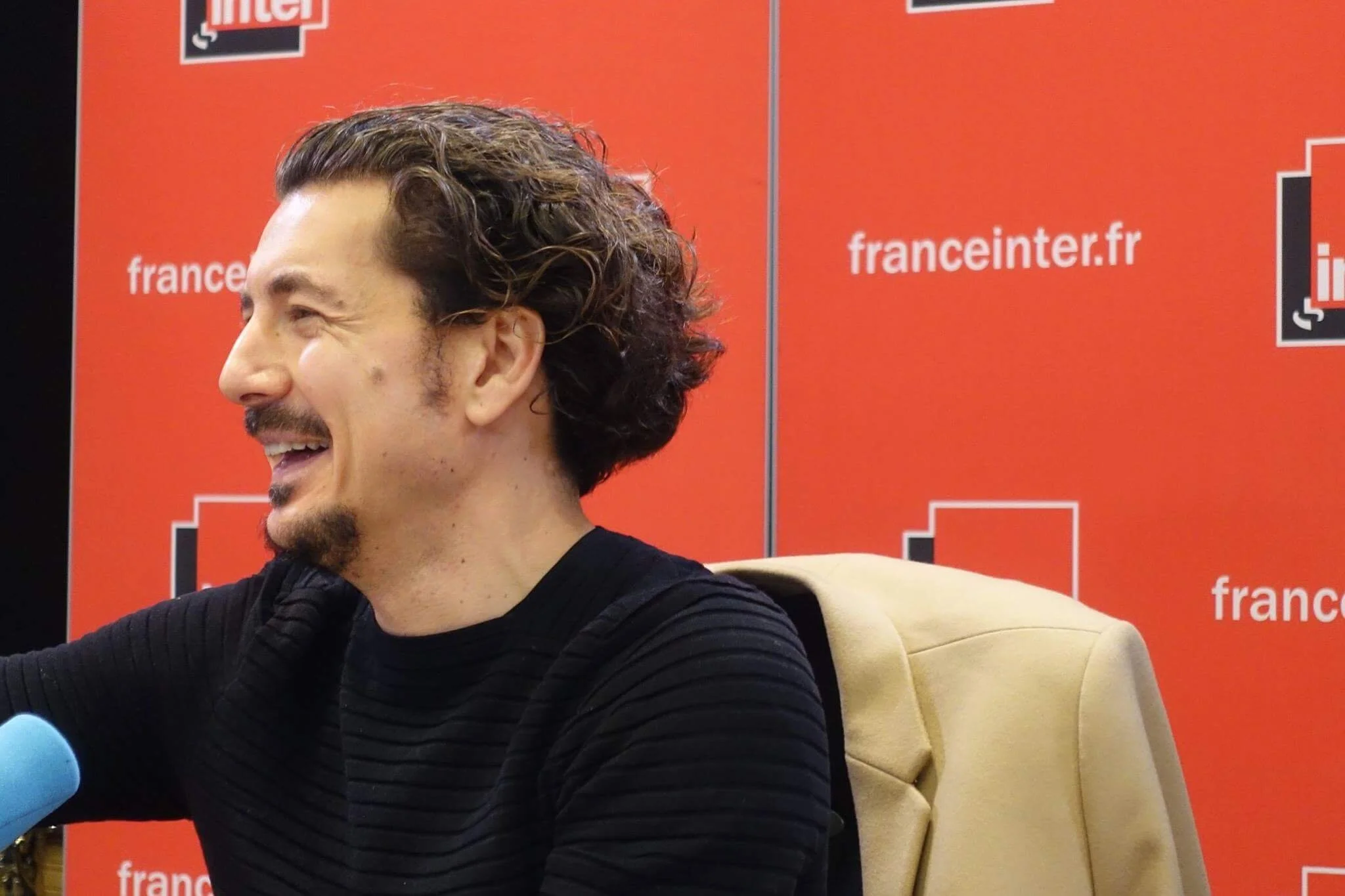Blogs
Mobile money in Senegal illustrates leapfrogging’s promise and limits. Freed from legacy systems, platforms like Wave and Orange Money expand inclusion via agent networks, enabling payments, remittances, and microcredit. Yet adoption creates uneven access, relies on imported phones, foreign telecoms, and offshore data centers, embedding dependency and potential digital colonialism. Evidence shows income and resilience gains, but long‑term development hinges on control of infrastructure, data sovereignty, and local capability building. Without structural transformation and supportive international conditions, reliance on external capital and technology can deepen vulnerabilities. Foresight and governance should steer innovation toward resilience, equity, and agency, not extraction alone.
One month after the Future of Aid 2040 report launch in New Delhi, hosted by IARAN, START Network, CHL, and the Humanitarian Hub, discussions continue across Berlin and Bogotá. The report envisions a reimagined aid system by 2040 centered on inclusivity, local leadership, and collective action. Key voices—including Sneha Mishra, Anuj Tiwari, Rajesh Kapoor, Vasundhara Pandey, and Manu Gupta—called for equitable resource distribution, decentralized decision-making, and stronger community ownership. AIDMI emphasized integrating local knowledge and the evolving role of AI to enhance future aid delivery and resilience.
“The baby is in our hands — and I am terrified.
The fight to gain power was one challenge. The responsibility that follows is far greater. Leadership has shifted to local CSOs, but no resources came with it. No plan for capacity strengthening. No donor message saying, ‘This is the system you must support.’ If we create babies malnourished from the start, we risk watching them die before they grow — and the true victims will be the communities we serve.”
— Puji Pujiono, Senior Adviser, Pujiono Centre
Following a 2022 coup, Burkina Faso's leader, Ibrahim Traoré, has championed pan-African and anti-imperialist movement. He's nationalized mining assets and established state-owned companies, rejecting international institutions like the IMF. Traoré's government has also expelled French troops and formed new alliances, including with Russia. These policies reflect a broader pushback against neocolonial influence, aiming for self-sufficiency and regional solidarity, although risks like corruption and new dependencies are a concern.
In a world facing "polycrisis"—overlapping, prolonged crises—the real challenge isn't just the shocks themselves, but our collective inability to perceive and respond to them effectively. These crises, whether economic or environmental, build up slowly and unnoticed until they reach a breaking point. As John Maynard Keynes observed, the public often overreacts with "excessive fears" to events they previously ignored, showing a lack of "reasonable anxiety" when it was needed. Economist Gabriel Palma described a three-phase cycle: a period of "lack-of-awareness" where problems grow, followed by a moment of "awareness" and panic, which ultimately gives way to a "new form of lack-of-awareness" where the initial fear fades and the underlying issues are forgotten again. This cycle of denial and reaction makes it difficult for societies to address the root causes, leading to flawed, reactive policies instead of lasting structural repairs.
The international aid system faces unprecedented transformation. INGOs must adapt to a fragmented, polycentric aid landscape marked by shrinking funding, localization pressures, and emerging local actors. Human Resources (HR) functions are central to this shift. Outsourcing HR is no longer a stopgap but a strategic response—enhancing flexibility, cost control, and quality. Decentralizing HR empowers field operations while preserving organizational coherence. Internal HR evolves into a strategic steward, focusing on talent management and organizational values. As humanitarian aid becomes more territorial and fragmented, robust, adaptive HR models will be vital to sustain impact and relevance in an uncertain future.
Amid systemic disruption and the unraveling of traditional aid paradigms, a transformative form of leadership is emerging from the Global South. Rooted in Indigenous knowledge, communal values, and contextual intelligence, this leadership model challenges entrenched power asymmetries and redefines humanitarian effectiveness. It does not seek to replicate Northern models, but instead cultivates authentic, regionally grounded responses shaped by collective wisdom and mutual accountability. This new leadership embraces complexity, fosters North-South symbiosis, and prepares for an increasingly multipolar humanitarian landscape. In doing so, it offers not only adaptation—but the foundation for a more just, inclusive, and sustainable future for humanitarian action.
OpenStreetMap emerges as a crucial tool in addressing the humanitarian crisis in Sudan, where traditional aid efforts overlook peripheral communities and critical infrastructure remains unmapped. Hernández highlights how this participatory mapping platform can help bridge visibility gaps, allowing local actors to contribute vital geographic data. The article envisions four possible futures shaped by the intensity of conflict and access to open mapping tools: (1) High conflict with minimal access leads to continued invisibility of rural communities; (2) Low conflict with limited access risks long-term neglect of peripheral areas; (3) High conflict with ample access could enhance response coordination despite violence; and (4) Low conflict with broad mapping use enables inclusive recovery.
In light of recent geopolitical shifts, the humanitarian sector is experiencing significant changes. The « To Each Their Playing Field » scenario from The Future of Aid: INGOs in 2030 report anticipates a fragmented humanitarian landscape, with decentralized responses and diverse actors beyond traditional INGOs. To remain relevant, INGOs must accelerate localization efforts, empowering regional partners and redefining their value propositions. This transformation is crucial to effectively navigate the complexities of a multipolar world and continue delivering impactful humanitarian assistance.
The conflict in eastern Democratic Republic of Congo (DRC) has spanned four decades, marked by escalating violence and the resurgence of armed groups like M23. Rooted in political instability since the 1990s, exacerbated by foreign interventions and regional conflicts, the crisis has displaced over seven million people, creating dire humanitarian needs. Despite international calls for action, support remains insufficient. Future scenarios hinge on addressing core issues like resource control, regional tensions, and governance reform. Potential paths include continued conflict, systemic collapse, gradual stabilization, or transformative peacebuilding efforts driven by local and international cooperation.
Myanmar's enduring conflict and political instability have severely impacted food security, with 15.2 million people facing hunger, including 12.9 million in severe conditions. Armed violence, displacement, and climate disasters, such as Cyclone Mocha, have disrupted agriculture and supply chains, leaving rural communities especially vulnerable. Humanitarian efforts remain underfunded, reaching only 40% of the targeted population in 2024. Projections suggest food insecurity will worsen, potentially affecting over 20 million by 2028. Limited access to resources, rising food prices, and environmental degradation exacerbate the crisis. Urgent action, including improved humanitarian access and investment in climate-resilient agriculture, is critical to mitigate worsening conditions.
In our digital era, safeguarding personal data is a challenge for everyone, but for refugees, it’s a matter of survival. Aid organizations and governments often hold sensitive information, from birthdates to fingerprints, to provide critical assistance. However, mismanagement of these systems can lead to severe consequences, such as discrimination or exploitation. Refugees face unique vulnerabilities as they cross borders, navigating diverse legal frameworks with inconsistent protections. To ensure their safety and dignity, privacy protections must evolve. Emerging technologies like blockchain and unified global standards offer promising solutions, empowering refugees to control their data and ensuring their privacy across borders.
Building on the success of the Future of Aid: INGOs in 2030 report, IARAN and CHL start the launching of this new study to explore transformative pathways for aid by 2040. With a focus on digitalization, disaster resilience, and decolonizing aid, the project will provide foresight scenarios and a toolkit for systemic transformation. Guided by a dedicated Steering Committee and using methodologies like La Prospective and Causal Layered Analysis, it empowers actors to navigate change collaboratively.
NGOs today need modernized structures and governance to remain effective and competitive. A proactive approach to risk management—covering identification, assessment, mitigation, and monitoring of risks like cybersecurity, climate change, and ESG factors—is essential for resilience. Governance within ESG is especially vital for sustainable financing. Transparency and compliance, alongside skills in strategic planning and risk management, strengthen reputation and stakeholder trust. As NGOs adapt to a rapidly changing environment, a tailored risk management approach helps ensure operational stability, financial health, and the continued effectiveness of their missions amidst complex global challenges.
This article delves into the critical tension between economic development and environmental preservation in some of the world's most vulnerable regions. By analyzing recent trends and leveraging strategic foresight, we provide a comprehensive overview of potential future scenarios and their implications. This piece for professionals and academics interested in understanding the evolving dynamics of sustainable development. Whether you are seeking to stay ahead of the curve or simply broaden your knowledge, this article offers valuable insights and actionable takeaways.
Rising sea levels, soaring temperatures, dwindling resources, and extreme weather events have inundated our headlines this decade. As the climate crisis intensifies, its impact on human displacement is also becoming increasingly evident. While the awareness of climate-related adversities is gaining traction globally, international law is yet to provide a legal framework for those displaced by severe climatic events. The term ‘climate refugees’ remains largely unrecognized under international humanitarian law since most climate-induced migration is localized within national borders. This gap in legal recognition becomes increasingly concerning as projections indicate that around 1.2 billion people may be displaced by 2050 due to climate-related disasters.
The "Doble Hoy No Circula" initiative has been an important measure to mitigate air quality within Mexico City's Comprehensive Program Against Atmospheric Pollution (PICCA). This measure was implemented as an urgent response to the growing air quality crisis. It current model began in 2014, aiming to restrict the use of private vehicles on specific days to reduce pollutant emissions and improve public health. In a megacity like Mexico City, where mobility and pollution are interconnected, policies like this affect not only the environment but also the health and well-being of its inhabitants.
The article titled "Navigating the Triple Nexus: Leveraging Diplomatic Synergies for Health Systems Strengthening" addresses the vital interplay between diplomacy and health system support in conflict-ridden areas. Through the lens of Humanitarian Diplomacy (HD) and Global Health Diplomacy (GHD), the piece advocates for a nuanced, integrated approach embodied by the Humanitarian-Development-Peace Nexus. This approach seeks to unify immediate relief with long-term development and peace efforts, using diplomacy as a tool to navigate the complex challenges faced by health systems in such settings, thereby ensuring sustainable health improvements and the safeguarding of human rights.
In this article, Miguel Castillo, a healthcare professional with over 10 years of experience at field level and hospital-based facilities in conflict-affected, developing and western countries, discusses his experience during the Rohingya crisis, highlighting the critical role of digital solutions in enhancing healthcare in humanitarian settings. The COVID-19 pandemic accelerated the adoption of such technologies, improving healthcare coverage globally, including in crisis-affected areas. The focus is on the digital transformation of health services, emphasizing the importance of technological infrastructure and the challenges in transitioning to digital systems. Key aspects include the expansion of 5G technology and increased smartphone accessibility, especially in low-and-middle-income countries. The article projects a significant rise in smartphone adoption by 2030, driven by affordability, and explores how these advancements improve health coverage in humanitarian situations.
This article explores the integration of generative artificial intelligence (AI) in foresight practices. Foresight, at its core, involves diverse perspectives envisioning future scenarios. Matthew Thomas, as part of the British Red Cross, discusses the rapid use of AI tools, specifically ChatGPT, Bing AI, and Perplexity, to sketch scenarios with a case study related to the UK's cost of living crisis. Although, initial results were unimpressive, with limitations in scenario generation, the article highlights the potential for AI to augment foresight practice, aiding in analysis and content generation for scenario creation.
The following article is a personal story from our fellow Mariana Merelo: In the winter of 2019, after two decades as a humanitarian and development practitioner, Mariana found questioning her role in driving systemic change within the humanitarian ecosystem. Despite being surrounded by passionate change-makers, including foresight experts, partnership advocates, and local champions, she felt stuck in the wrong vehicle for change. Mariana had worked for a prominent INGO, which espoused a commitment to empower local actors and crisis-affected communities in decision-making and emergency responses. However, a glaring gap existed between the organization's rhetoric and tangible actions. It was not until she found collaborative foresight, as a co-created and co-evolving approach to explore alternative futures that she found a response to the previous challenge.
While anti-corruption efforts are on the rise, challenges persist, including declining global peace, weakening democracies, a shift to a multipolar world, cybersecurity threats, declining ethical standards, and evolving technology. Despite these obstacles, there's a growing global focus on anti-corruption measures, with organizations and governments working together. However, the future remains uncertain, with potential developments like AI-driven corruption and innovative technologies offering both risks and opportunities.
Mexico's demographic shift from a youthful population to an aging society by 2050 brings both challenges and opportunities. The median age is projected to rise from 27.9 to 42 years. Scenarios include a "Growth Scenario" with economic strength but pension system concerns, a "Collapse Scenario" depicting institutional breakdown and grassroots responses, a "Limits & Discipline Scenario" with elderly power leading to youth drain, and a "Transformation Scenario" driven by comprehensive reforms and a care economy. Proactive measures like nurturing a "silver economy," migrant integration, and financial education are recommended to shape a favorable future amid demographic changes.
Save the Children Italia is undergoing a strategic transformation guided by IARAN to navigate contemporary multidimensional shifts. Engaging around 100 staff, the organization employs a foresight-based approach to explore potential future contexts until 2030. Through a collaborative process, key drivers have been identified and detailed in "Driver Files." This article narrates the example of "Geopolitical Shifts" and highlights the evolving global political landscape's impact on democracy, civil liberties, populism, and international relations. This exercise encourages systemic thinking, breaks silos, and challenges hierarchical dynamics, emphasizing collective intelligence to inform strategic choices and adapt to a changing world.
"Unleashing Local Potential: Advancing Aid Localization in Ukraine" delves into the critical importance of bringing power and resources closer to the communities in need. The article highlights the crisis in Ukraine as a turning point for advancing the localization agenda in humanitarian aid. By recognizing the capabilities of local actors and addressing the challenges they face, the article advocates for a transformative approach that empowers Ukrainian civil society and fosters effective localization of aid.
Innovation in the humanitarian sector is a challenging journey, often hindered by cultural resistance. However, with a transformation strategy, leadership support, and a culture open to change, these obstacles can be overcome. Strategic foresight, which anticipates future trends and proactively develops solutions, can greatly enhance this process. External pressures, like the COVID-19 pandemic, can also catalyze cultural transformation, prompting organizations to rethink traditional ways and embrace innovation.
The world is facing a severe economic downturn, but the flow of remittances has been relatively stable and continues to provide support for many families in low and middle-income countries. According to the World Bank, global remittance flows reached $626 billion in 2022, an increase of 5% from the previous year. This growth is smaller than in previous years, but it is significant given the economic outlook. Investing in livelihoods support for migrants in high-income countries could be an effective way of supporting communities globally.
The humanitarian ecosystem is failing to adapt to global transformations and new types of crises. This failure is rooted in the opportunistic nature of ODA flow governance and the entrenched value chain of formal humanitarian actors. To break free from this short-termism trap, the humanitarian ecosystem must shift its approach and values, prioritizing the needs and voices of those affected by humanitarian crises. Only then can it fulfill its potential to provide effective and lasting assistance.
Two years of huge emergency after huge emergency - from the Covid-19 pandemic’s various variants to evacuations from Afghanistan and a series of storms battering the UK - our people are tired, yet the need for humanitarian aid continues to grow. And then the Ukraine crisis boiled over.
We have always struggled to plan for the many uncertainties the future may bring, but the massive disruptions of the last couple of years made us realise that grappling with uncertainty is not an option.
The British Red Cross’s Strategic Insight and Foresight team has been developing a way to rapidly construct scenarios about the future, helping our teams get a sense of likely people’s short-term and longer-term humanitarian needs, as well as the potential ripple effects caused by a crisis.
Featured news & op-eds
Michel Maietta, former Director of Strategy at Save the Children International and Action Against Hunger, IARAN director and facilitator, recently gave an interview regarding the issue of migration from the humanitarian and European perspective. The interview also touched on other matters, including media perception and the role of NGOs and civil society on the matter.
In this Shabka Inform & Debate series several authors answer the question what changes are to be expected for development policy as well as development and humanitarian aid in the polycrisis. Since the call for inputs was bilingual in character, the answers are both, in German and English language.
Heba Ali, director of The New Humanitarian, shares her analysis of what we thought COVID19 would change and the change we’ve seen to date. From mid-size INGOs struggling following the COVID19 crisis, to overwhelming needs in multiple countries and at transnational level: new actors are becoming more relevant while the formal humanitarian sector is digging in old-fashioned programming, behind walls of existentialist inertia.
L’ONG, fragilisée par un scandale sexuel en 2018 et par la crise du coronavirus qui réduit ses recettes, va fermer plusieurs bureaux. Elle en profite pour réinventer son action et laisser plus de place aux organisations du sud. Dans ce monde qui évolue, « Oxfam essaie de se remettre en question. Décroître n’est pas mourir. On meurt quand on n’accepte pas les changements du monde et que l’on refuse de se transformer », explique Michel Maietta.
Comment favoriser leur inclusion et leur visibilité dans les sociétés où ils et elles vivent? Comment répondre à une crise humanitaire qui n’en porte jamais le nom ? A l’occasion de la parution du rapport "A Global Outlook on LGBTI Social Exclusion through 2030" de l'Inter-Agency Research and Analysis Network (IARAN), Michel Maietta reponds aux questions de Xavier Martinet sur France Culture.
The persecution of LGBTI individuals is a crime against humanity. We can be under no illusion that this humanitarian protracted crisis will be resolved quickly, despite examples of recent progress with the decriminalisation of homosexuality. The humanitarian sector has already shown concerted efforts to ensure gender inclusion, we now need more than ever a leap in humanitarian leadership to enlarge this agenda to effectively encompass the whole of the LGBTI community.
There is no disputing that this growing global connectivity can provide more opportunities for self-organization and access to alternative sources of assistance to people affected by crisis. However, many people will also be left behind in the digital divide.
“Bringing flawed humans and organisations together to collaborate is no easy task. But faced with the daunting nature of global challenges, I believe networks offer an inspiring vision for collective change and that each of us should seize the opportunity to bring together our respective strengths to tackle multidimensional challenges. As I look ahead, I’m excited to be joining a network of fellows working on the future of humanitarian assistance, and to find new networks in my future home of Port au Prince, Haiti. I hope to collaborate with many of you along the way”. Isabelle Pelly
We, as humanitarians, are compelled to respond to the suffering of others, yet, when it comes to the distribution of aid, repeatedly people affected by crisis report having very limited ability to influence the decisions we take in our efforts to support them. Formal aid actors must choose to change and adapt, and use this moment to focus on supporting crisis-affected people to have stronger voices, more choices and greater influence over the aid they receive.
L’Indonésie a développé une expertise en matière de séisme et de tsunami. Elle tente de l’utiliser depuis le 28 septembre à Palu. « Les ONG internationales ne peuvent plus se permettre d’intervenir sans la société civile qui a la connaissance du terrain », affirme Michel Maietta.
“The Future of Aid” does not make any guarantees about the future. Nothing is set in stone, and the world stage is set to change at any time. However, INGOs and other organizations can benefit from taking heed of its predictions and advice. Through these forward-thinking strategies, aid organizations will be able to better anticipate the future and prepare accordingly.
By 2025, 1.8 billion people will be living in slums or shanties. In areas like these, conditions are squalid — residents have limited access to clean water, electricity and arable land, and without a central sewage system, will live amid pollution and waste. The humanitarian sector will need "fundamental, not incremental" change, state Eilidh Kennedy.
This blog is based on research from The Future of Aid, a foresight study on the future of aid through to 2030. It looks at current trends, presents 4 scenarios for the future, categorises crises that are likely to occur in the next 15 years and lays out 5 organisational profiles for INGOs to implement to ensure relevance through to 2030. Click here for the full report.
Ethique, financement : vers un changement de paradigme humanitaire ? Écoutez Michel Maietta répondre aux questions de Xavier Martinet
As global power and resources shift away from traditional bastions, researchers warn major aid organisations will be sidelined by 2030 unless they change tack.
Michel Maietta shares with the Huffington Post the 9 types of crises that we will have to deal with through to 2030. “Everyone will need to prepare for the crises that are on the horizon. We are seeing an increasing number of new aid actors delivering aid, such as private companies, the military, faith-based organisations, the diaspora, citizens' movements.”
Building foresight into humanitarian response and development: A call from IARAN for long-term thinking and participation precedes news from the front, from the International Federation of Red Cross and Red Crescent Societies.
